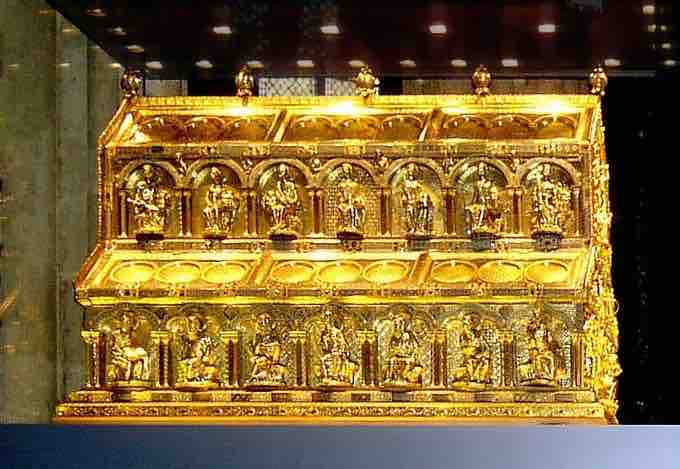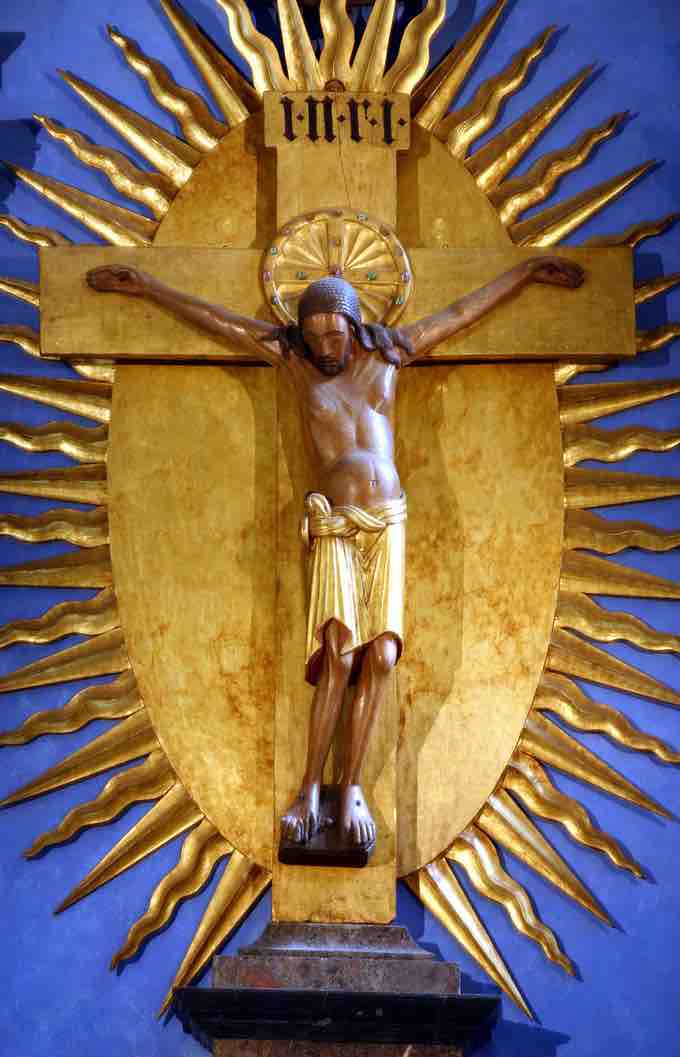Gothic art was a style that developed concurrently with Gothic architecture during the mid-12th century. Primary media in the Gothic period included sculpture, panel painting, stained glass fresco, and illuminated manuscripts. The earliest Gothic art existed as monumental sculpture on the walls of cathedrals and abbeys. Elaborate sculpture was used extensively to decorate the facades of these buildings.
Cologne Cathedral
The Cologne Cathedral is a renowned monument to German Gothic architecture as well as a World Heritage Site home to numerous works of art and decorative sculpture. Its exterior serves as a stunning example of German Gothic architecture, while its interior houses numerous examples of gothic sculpture and artwork.

Cologne Cathedral
The Cologne Cathedral is an example of German Gothic architecture.
One of the important works in the cathedral is the High Altar, installed in 1322. It is constructed out of black marble, with a solid slab 15 feet long forming the top. The front and sides are overlaid with white marble, nine inches into which figure are set, with the Coronation of the Virgin at the centre.
The most renowned work of art in the cathedral is the Shrine of the Three Kings. It was commissioned by Philip von Heinsberg, archbishop of Cologne from 1167 to 1191, and created by Nicholas of Verdun. It is traditionally believed to hold the remains of the Three Magi or Three Wise Men, whose relics were acquired at the conquest of Milan in 1164. The shrine takes the form of a large reliquary in the shape of a basilican church, made of bronze and silver. It is gilded and ornamented with architectonic details, figurative sculpture, enamels, and gemstones. The entire outside of the shrine is covered with an elaborate decorative overlay. There are 74 high relief figures in silver gilt in all, not counting smaller additional figures in the background decoration. On the sides, images of the prophets decorate the lower sections, while images of the apostles and evangelists decorate the upper part. On one end, there are (across the bottom, from left to right) images of the Adoration of the Magi, Mary enthroned with the infant Jesus, and the baptism of Christ. Above, one may see Christ enthroned at the Last Judgment. The opposite end shows scenes of the Passion: the scourging of Christ (lower left), and his crucifixion (lower left), with the resurrected Christ above. The figures, with their fully modeled bodies and wet drapery, demonstrate how sculptors in the Gothic period were familiar with classical references and were able to employ them in their works.

Shrine of the Three Kings
The Shrine of the Three Kings in Cologne Cathedral is said to house the remains of the Three Magi and serves as an example of German Gothic sculpture.
Near the sacristy is the Gero-Kreuz, a large crucifix carved in oak with restored paint and gilding. It is the oldest large crucifix north of the Alps, as well as the oldest known free standing Northern sculpture of the medieval period.

The Gero-Kreuz
The Gero-Kreuz is the oldest large sculpture of the crucified Christ north of the Alps and is located in the Cologne Cathedral.
Portable Sculpture
Aside from monumental sculpture, smaller, portable sculptural pieces were also popular during the Gothic period. Small carvings, made generally for the lay market, became a considerable industry in urban centers. Gothic sculptures independent of architectural ornament were primarily created as devotional objects for the home or intended as donations for local churches. Nevertheless, small reliefs in ivory, bone, and wood covered both religious, as well as secular subjects, and were for church and domestic use. Such sculptures were often the work of urban artisans. The most typical subject for three dimensional small statues is the Virgin Mary alone or with child. Additional objects typical of the time included small devotional polyptychs, single figures, especially of the Virgin Mary, mirror-cases, combs, and elaborate caskets with scenes from romances.